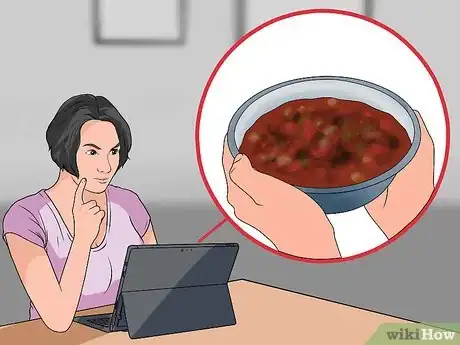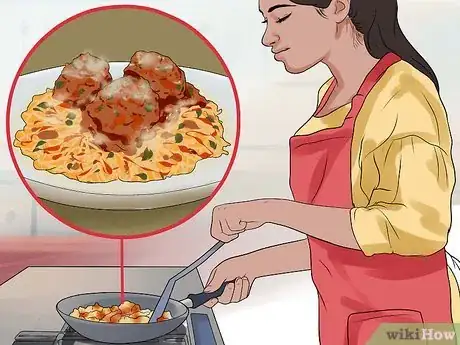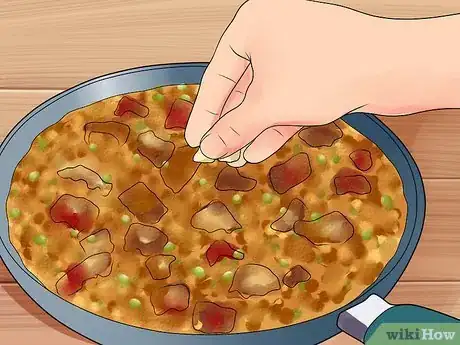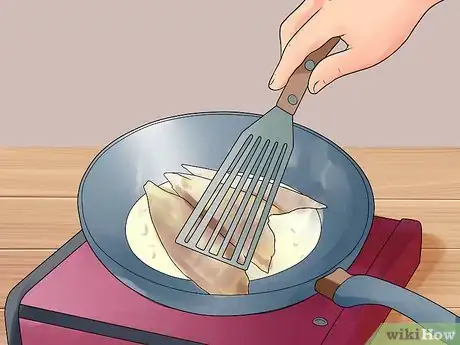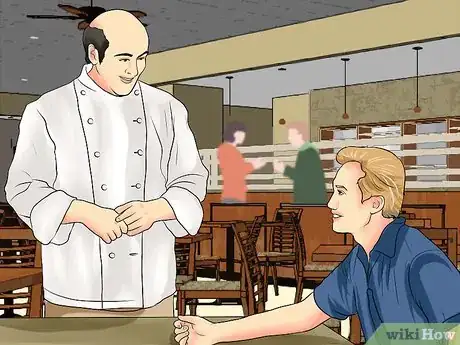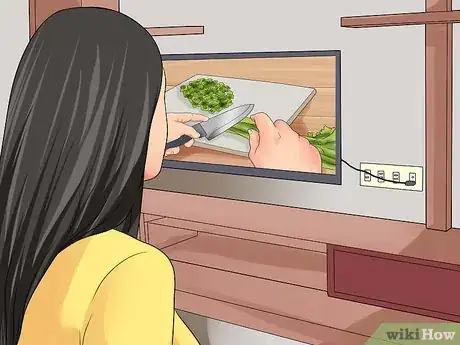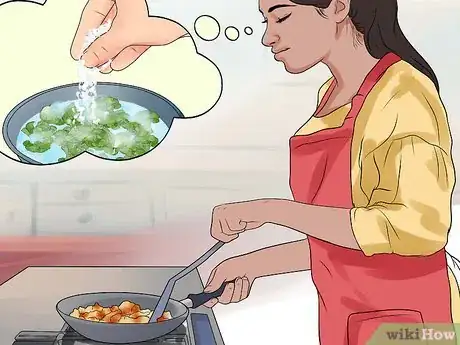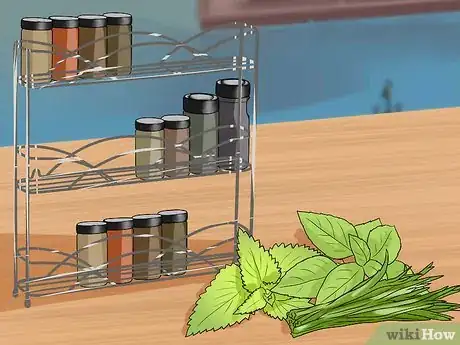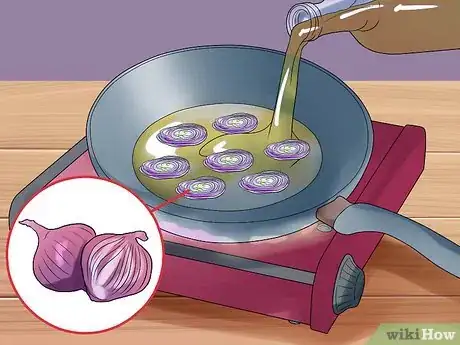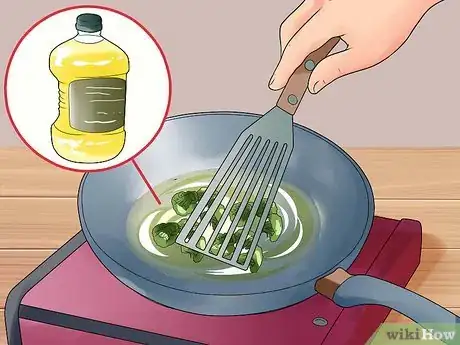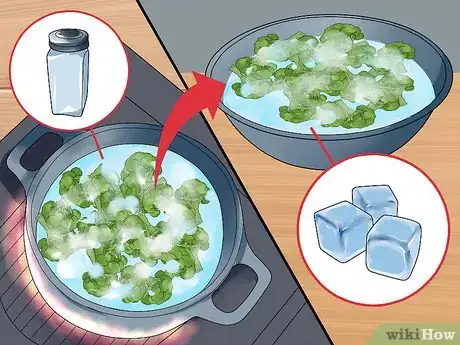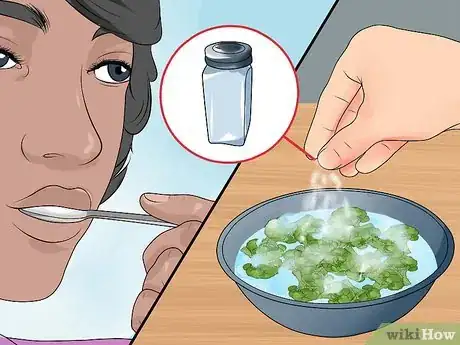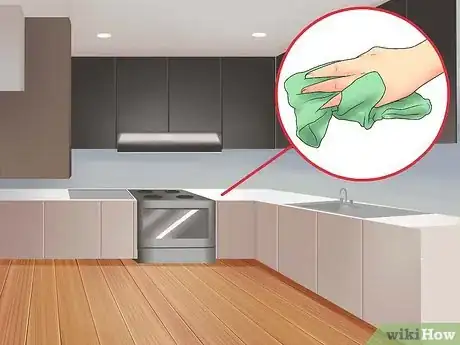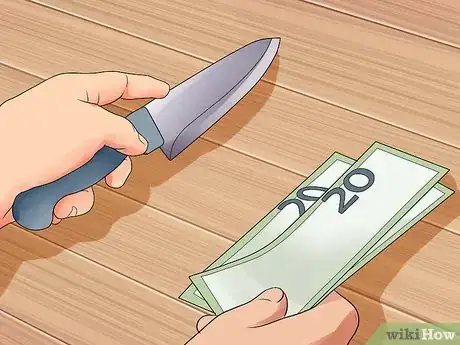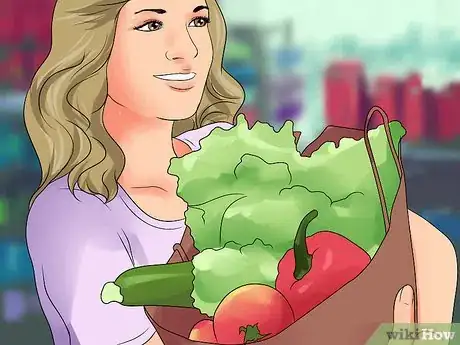This article was co-authored by wikiHow Staff. Our trained team of editors and researchers validate articles for accuracy and comprehensiveness. wikiHow's Content Management Team carefully monitors the work from our editorial staff to ensure that each article is backed by trusted research and meets our high quality standards.
There are 9 references cited in this article, which can be found at the bottom of the page.
wikiHow marks an article as reader-approved once it receives enough positive feedback. In this case, 93% of readers who voted found the article helpful, earning it our reader-approved status.
This article has been viewed 129,859 times.
Learn more...
Everyone has that friend who doesn’t use a recipe, has all the ingredients and makes a delicious dish on a whim. What you don’t always realize is how much effort was previously put into improving that talent. You should approach a kitchen the same way a painter approaches her canvas. Becoming a good cook takes practice, but over time you’ll become confident and successful in the kitchen.
Steps
Cultivating Your Inner Chef
-
1Seek out reliable recipes. You need to read recipes before you can start to experiment in the kitchen. Even those cooks you know who claim they don’t use recipes, have read their fair share of recipes and even have some saved. A great way to find reliable sources is by researching a specific recipe.
- Do an online search of something common like “chili” or “baked mac n’ cheese.”
- Read several recipes and choose one that has a good online rating and that looks interesting to you.
- Comments on websites aren’t reliable, but you can generally get a decent idea of how successful a recipe was due to the comments.
- Ask for suggestions as well. Your friends who enjoy cooking probably have their favorite websites or cookbooks. Don’t be afraid to ask.
- You should also ask your family members. There are certain family recipes that grandmothers like to keep in the family and are usually incredible.
-
2Cook several recipes. Once you start to build a repertoire of credible recipes, start cooking. If you are new to cooking, try to cook as much as you can. Most recipes have a difficulty rating and you should use this as a guide and cook easy recipes. There is no need to start ambitiously by making homemade gnocchi. Try cooking some of these basic recipes:
- Spaghetti and meatballs
- Garlic bread
- Frittata
- Fried chicken
- Burgers
- French toast[1]
- Read the entire recipe before cooking.
Advertisement -
3Work through a cookbook. It helps beginners and pros alike to have a printed out, edited recipe in front of them. Today there are several types of cookbooks that range on skill sets and cuisines. Take a bit of time to consider some of the following recommended cookbooks:
- Afro Vegan by Bryant Terry.
- The Ode to Southern Food by Edna Lewis
- Momofuku by David Chang and Peter Meehan
- The Zuni Cafe Cookbook by Judy Rodgers[2]
- There are also great food blogs/websites like http://food52.com or http://smittenkitchen.com
-
4Prepare tougher recipes. Once you start to become more familiar with cooking and recipes, you can set out to tackle more complex recipes. You might ruin one or two recipes as you work your way up to become a good cook. The point is to learn and overcome from difficulties in the kitchen. Many recipes termed “advanced,” merely require planning from you and sometimes need to be prepped the night before.
- Try out some of these dishes that are considered difficult: paella, beef wellington, or mole.
- These recipes will take a fair amount of time, but you will feel unstoppable if you can finish one of these.
-
5Cook all your meals. Improve your cooking skills by forcing yourself to only eat your own creations. This will help you master your favorite dishes, but it will also inspire you to create new flavors. Cook meals in large quantities to eat leftovers at work.
- Cooking all meals takes planning and will power, but you will learn by cooking a lot!
- Contain your urge to eat at your favorite restaurants by cooking a similar dish.
-
6Expand your palate. A key to being a good cook is to be open to different cuisines from various cultures. You need to experience a wide variety of flavors to help foster your creativity as a cook. Go to a restaurant of a cuisine you have never tried like: Korean, Cuban, Indian, Ethiopian, or Mediterranean.
- Talk to foodies for inspiration. Seek out your friend who thinks of herself as a foodie and ask for a restaurant recommendation. Try to go out to dinner with this person to get even more of a food experience.
-
7Watch cooking shows. Cooking shows are a great way to watch how recipes are made and offer plenty of helpful cooking tips. You can watch the food channel, which is exclusively reserved for television programs catered around cooking and food. There are also plenty of online videos about cooking that range from amateurs to professional chefs.
Cooking Without a Recipe
-
1Adapt a recipe. Many times, people who aren’t using a recipe have already made that dish by following a similar recipe. Once you’ve made a recipe a handful of times, try to cook it based on memory. By working through memory, you’ll adapt the recipe into your own dish.
- If you enjoy a particular ingredient in a dish, like celery for example, then add more chopped celery to the dish.
- Attempt to create a recipe based off the ingredients you own. Try adapting the recipe without buying extra supplies. It might work, or you could fail, but at least you tried.
-
2Use spices with intention. A well stocked spice rack can enhance impromptu creations. There are dozens of spices and combinations available to you. Use the following information about some classic spices to help you get started:
- Basil is a sweet and earthy herb that has many types variants. Basil pairs well with Italian recipes (pasta, red sauce) and also works well in Asian stir fries with peanuts or coconut milk.
- Curry powder is a variety of different herbs that is great for Indian dishes and varieties. Try curry powder in lentil stew, a breakfast scramble, or in rice/quinoa with cilantro.
- Cumin is an earthy flavor with a bit of a spice. Cumin is perfect for Mexican dishes like tacos, black bean/refried beans, root vegetables, and on fish (tilapia).
- Rosemary is sweet and woody. Rosemary goes well with many dishes like meats or potatoes. Rosemary is a good addition to any type of roasting with olive oil.
- Thyme is an earthy herb. Thyme works well in any bean dish. It pairs well with other spices like bay leaves, lemon zest, and parsley.
-
3Make a pan sauce. Take advantage of the residue left in your pan after cooking to create a delicious sauce to accompany your meal. This technique works best after searing meat in a pan. Remove the meat and any excess fat from the pan and turn the heat down to medium. Add some spices and herbs like a chopped shallot, garlic, and yellow mustard seed powder. Cook these down for about five minutes and then add some liquid.
- One of the best liquids to absorb the pan’s remnants and create flavor is alcohol. Add about a ¼ cup of red/white wine or beer.
- Cook the liquid down while stirring with a wooden spoon to blend all the remnants of the pan into the sauce. After 4-5 minutes throw in some lemon zest, thyme, or rosemary to complete a delicious accompaniment to your meal.[3]
-
4Create a sauté. Sautéing is the process of cooking food quickly at a high temperature in a shallow, wide pan. The key to sauteing is cutting all the ingredients into uniform size so that everything cooks evenly. You can sauté meat, vegetables, and even fruit. Heat the pan to medium-high for about 10 minutes and then add your favorite oil/butter (2 tablespoons).[4]
- Add your chopped food into the pan and cook for about ten minutes stirring frequently.
- Experiment with the order of when you add certain ingredients. Some like to add garlic and onions last and others like to add it to the pan first.
- If you are sautéing meat, consider sautéing the meat separately to avoid under-cooking the meat. Once you feel comfortable you can sauté everything in the same pan.
-
5Learn how to caramelize. Caramelizing is a useful technique that can be used to many ingredients. Caramelizing is all about slow cooking in a pan to bring out the natural sweetness out of an ingredient. Take caramelizing onions for example:
- Use thick slices to avoid burning the onion and cook with an even ratio of butter and oil. Cover the surface of the pan, but don’t cram too many onions onto the pan. Keep the heat on medium-low throughout the cooking to ensure a successful caramelization without burning anything. This will take close to 45 minutes if done properly.
- You can do this same technique with a variety of produce like garlic or even broccoli.
-
6Sweat your vegetables. Sweating your veggies is very similar to sauteing, but the temperature you use to sweat is lower. You want bring out flavors while tenderizing the veggies, instead of browning them. Heat your pan on medium-low heat and wait about 10 minutes for the pan to heat. Add the oil of your choice (2 tbs), distribute the oil in your pan, and then add your chopped veggies.
- Throw in a healthy amount of salt and let your veggies sizzle gently, opposed to a loud sizzle. Adjust the temperature if it sounds too loud.
- Stir the produce frequently to avoid browning. Cook in the pan for about five to ten minutes. You are looking for your produce to soften or become translucent.[5]
-
7Blanch your veggies. Another technique for vegetables is blanching. Heat a large cooking pot of water on high heat with a generous amount of salt. Prepare a bowl of ice water and set to the side. Chop your vegetables and once the water is boiling, add them to the pot. Let the veggies cook for 1 ½ to 2 minutes tops. Strain the vegetables in a colander and immediately dump them into the ice bath.[6]
- The result is perfectly tender vegetables that can easily be thrown into a dish.
- If you plan to cook the veggies in a different pot, heat them in boiling water for a minute.
- After thirty seconds in the ice bath, your vegetables are ready.
-
8Adjust the flavor. A vital part of cooking is tasting the flavor as you cook. If the dish tastes bitter or bland, add salt to the dish. Try out a pinch or teaspoon at a time until the flavor improves. If you think the dish still needs more flavor try adding acidity or spice to the dish.
- Add spice by using chopped, fresh peppers (jalapeno or habanero), 1 tsp of cayenne pepper or red pepper flakes.
- Add acidity near the end of cooking by squeezing a fresh lemon over the dish, or by adding 2 tablespoons of vinegar (rice wine, balsamic, or malt).
- Another way to boost the flavor of a dish is by adding a splash of wine. Let the dish cook for 5 to 10 minutes in order to cook off the alcohol.[7]
-
9Don’t be afraid to experiment. Experimenting in the kitchen won’t always produce an incredible meal. All cooks who’ve took this leap have failed at some point through experimentation. The point is to attempt to move forward into uncharted cooking territories.
Preparing Your Kitchen and Pantry
-
1Organize your space. The best way to prepare for a recipe is by having a clean and organized work space. Begin by cleaning the surface tops of your kitchen and ensure that there aren’t any dirty dishes in the sink. Keep your cabinets clean and organized by going through them to check for expired products.
- Additionally, you want your refrigerator to be clean and avoid keeping expired or too much leftover food.
-
2Purchase decent equipment. The first advice you’ll hear from cooks on how to become better cooks is to have good knives. Invest in the nicest knives you can afford. It might sound unimportant, but quality knives will expedite your chopping process and make cooking more enjoyable.[8]
- A good way to check if your knife is sharp enough is if you cry while cutting onions. A knife that is sharp enough won’t cause you to cry.
-
3Plan out your week. The best way to save money and shop efficiently is by planning out a meal for each night of the week. Once you figure out your meal for everyday of the week, you can start to look at each day’s recipe and ingredient list. Compile a grocery list based off your plan. Take this model as inspiration for you as you plan out your week:[9]
- Monday is pasta night.
- Tuesday is taco night.
- Wednesday is Asian stir-fry.
- Thursday is meat and potato night.
- Friday is burger night.
- Saturday is your night to go out.
- Sunday is leftover night.
-
4Shop smart. The best way to shop for multiple recipes is to choose recipes that require similar ingredients. This way you can buy bulk amounts of similar ingredients to cover a lot of grounds. You should also consider the amount of processed food you buy and feed your family. Attempt to stay away from lengthy ingredient lists and especially from GMO (genetically modified products) and high fructose corn syrup.
- Shop organic when you have the means to. There are ways of shopping for healthy ingredients on a budget.
Community Q&A
-
QuestionWhat can I do as a child to learn to cook?
 Community AnswerWatch your parents cook, and see if they will let you do simple tasks like flip a burger, whisk eggs, get the proper measuring cups, etc. After a while they should start letting you do more complicated tasks that may or may not involve heat. Eventually you can start cooking your own food.
Community AnswerWatch your parents cook, and see if they will let you do simple tasks like flip a burger, whisk eggs, get the proper measuring cups, etc. After a while they should start letting you do more complicated tasks that may or may not involve heat. Eventually you can start cooking your own food. -
QuestionHow can I be confident when cooking?
 Community AnswerLearn how to prepare one dish really well, and then add another to your repertoire. Your confidence in the kitchen will improve with each new dish you make. Watch cooking shows for tips, and consider taking a community education class to further your knowledge and make you more comfortable cooking.
Community AnswerLearn how to prepare one dish really well, and then add another to your repertoire. Your confidence in the kitchen will improve with each new dish you make. Watch cooking shows for tips, and consider taking a community education class to further your knowledge and make you more comfortable cooking. -
QuestionIf I only have spices and beef stock, how can I make the meat taste good?
 Community AnswerUse some spices and experiment and see what spices you like best and keep improving the dish to your liking. Good Luck.
Community AnswerUse some spices and experiment and see what spices you like best and keep improving the dish to your liking. Good Luck.
References
- ↑ http://www.bonappetit.com/recipes/slideshow/recipes-everyone-should-know-how-to-cook
- ↑ http://www.epicurious.com/expert-advice/10-essential-cookbook-canon-article
- ↑ http://www.bonappetit.com/test-kitchen/how-to/article/perfect-pan-sauce
- ↑ http://www.bhg.com/recipes/how-to/cooking-basics/how-to-saute/
- ↑ http://www.reluctantgourmet.com/how-to-sweat-vegetables/
- ↑ http://startcooking.com/blanching-vegetables
- ↑ http://www.thekitchn.com/basic-techniques-eight-ways-to-75838
- ↑ http://www.foodnetwork.com/chefs/articles/100-greatest-cooking-tips-of-all-time.html
- ↑ http://www.thekitchn.com/10-tips-for-better-weekly-meal-planning-reader-intelligence-report-177252
About This Article
To be a good cook, find reliable recipes, either online or in a cookbook, and practice making them regularly so you learn new skills and get better in the kitchen. You can even work through an entire cookbook you like to learn how to make a variety of foods. You should also work on mastering a few cooking essentials, like sauteeing, carmelizing, blanching, and seasoning. Once you've mastered some basic recipes and skills, try experimenting in the kitchen by adapting recipes or inventing new ones. To learn how to shop and stock your kitchen for cooking, scroll down!
